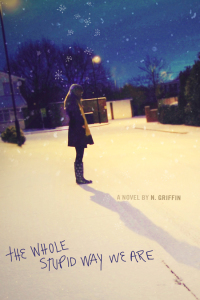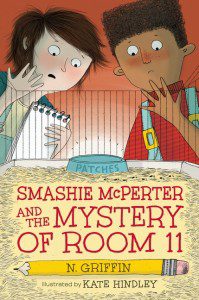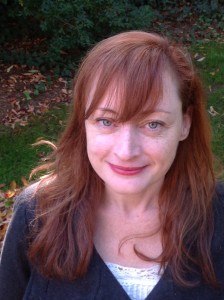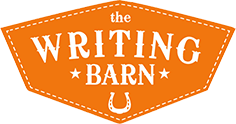What My Last Book Taught Me
by Nicole Griffin
 There’s a quotation that regularly makes the rounds of the internet and Facebook in particular: “Writing is like driving at night in the fog. You can only see as far as your headlights, but you can make the whole trip that way.” E. L. Doctorow is the actual author of this one, as far as I can tell, but who knows. Maybe it really was Mark Twain, to whom I’ve also seen it attributed, referencing his new SUV in the days leading up to the 1910 visit of Haley’s Comet.
There’s a quotation that regularly makes the rounds of the internet and Facebook in particular: “Writing is like driving at night in the fog. You can only see as far as your headlights, but you can make the whole trip that way.” E. L. Doctorow is the actual author of this one, as far as I can tell, but who knows. Maybe it really was Mark Twain, to whom I’ve also seen it attributed, referencing his new SUV in the days leading up to the 1910 visit of Haley’s Comet.
This quotation resonates with me because it is so true—we seldom have the whole picture for our books before we set out to write them, and things pop up in that headlight light that surprise us all the time. But what I love about writing each new book is that the lessons learned from previous work let the headlights of that car stretch a little bit longer, illuminate a bit more. This isn’t to say writing books gets any easier, because each one always feels impossible in its own way. But that’s largely because we set new, bigger goals for our subsequent works and have already internalized the lessons that were headlight-stretching for the last one so we don’t feel them as much the next time around, when there’s a whole new layer of lessons to learn.
I’ve struggled a bit to figure out what I should claim as my “last book” for this post: My last published book? The last one I actually wrote? Well, I can’t do the latter because it still has flaws I can’t put my finger on, so I haven’t sufficiently learned enough for that one. What about the last YA I wrote (untitled as yet but coming out with Caitlyn Dlouhy’s imprint at Athenuem, a division of Simon and Schuster, sometime when I am about ninety)? What about the last middle-grade mystery I wrote (coming out next fall from Candlewick)? I think to illustrate what I mean by my own headlight-enhancing learning, I need to talk about both of these sort of lastish books—the upcoming YA and the middle grade.
If you are lost in the tangle of books I am talking about, you will know exactly how I felt sitting down to write that YA. Like most of us, I love and hate writing. I love character and setting and relationships. I hate plot. So when I sat down to write that YA novel, I had every idea of who was in that book and how they felt and their emotional trajectories but no idea how to create the events that would effect the changes needed to create those trajectories. So I had to reach back, and I reached back to Smashie McPerter.
Like most of us, I love and hate writing. I love character and setting and relationships. I hate plot. So when I sat down to write that YA novel, I had every idea of who was in that book and how they felt and their emotional trajectories but no idea how to create the events that would effect the changes needed to create those trajectories. So I had to reach back, and I reached back to Smashie McPerter.
Smashie is the protagonist of both the first book she appeared in, SMASHIE MCPERTER AND THE MYSTERY OF ROOM 11, as well as that new middle-grade mystery coming out next fall. She is sweet, impulsive, funny and loving, and man, can the girl solve a mystery. And it turns out that learning how to write those mysteries for her and coming up with the ways she solves them helped me develop the tools I needed to plot the new YA.
Mysteries are about unanswered questions.They are about clues and learning, raising questions and delaying answers and putting all of this together to reach a satisfying end. And you know what? Considered in this light, all books are mysteries. In realistic fiction, sci-fi, spec fiction, fantasy, all of it, there are things we want to find out and development in character and event lead the reader to discover the truth. Therefore, if you learn how to write a mystery, you learn a heck of a lot about writing a book in general. So when I set out to write the new YA, I borrowed the structure I used in writing my mysteries.
Writing in three acts helps me enormously—it provides enough structure that I don’t get overwhelmed, but not so much that it feels like a pair of handcuffs. My mysteries are in three acts, and so was my new YA. I used what I learned about planting clues in the mystery to
 set up what would become emotional reveals in the YA so they felt organic, logical and true. Just as Smashie’s character leads to all of her decisions about how and why to investigate the mysteries that plague her third grade classroom, the same was true in writing the YA—who the characters were inside directed their actions, and thus created the actual events of the book. And that is exactly what becomes the plot I generally find so hard to create. So that’s what I learned about one book that helped me discover what is true about any book I’ll ever write: the tools of writing a mystery are the same tools work in creating any kind of book. And you know what? The confidence boost this has given me has made me dread plot less with each new book. If that isn’t headlight-widening, I don’t know what is.
set up what would become emotional reveals in the YA so they felt organic, logical and true. Just as Smashie’s character leads to all of her decisions about how and why to investigate the mysteries that plague her third grade classroom, the same was true in writing the YA—who the characters were inside directed their actions, and thus created the actual events of the book. And that is exactly what becomes the plot I generally find so hard to create. So that’s what I learned about one book that helped me discover what is true about any book I’ll ever write: the tools of writing a mystery are the same tools work in creating any kind of book. And you know what? The confidence boost this has given me has made me dread plot less with each new book. If that isn’t headlight-widening, I don’t know what is.
N. Griffin is the author of The Whole Stupid Way We Are (Atheneum, 2013), for which she was named one of Publishers Weekly’s Flying Start Authors of 2013, as well as Smashie McPerter and the Mystery of Room 11 (Candlewick, 2015). She received her MFA from the Vermont College of Fine Arts and lives outside of Boston. She has a lot of dogs.
